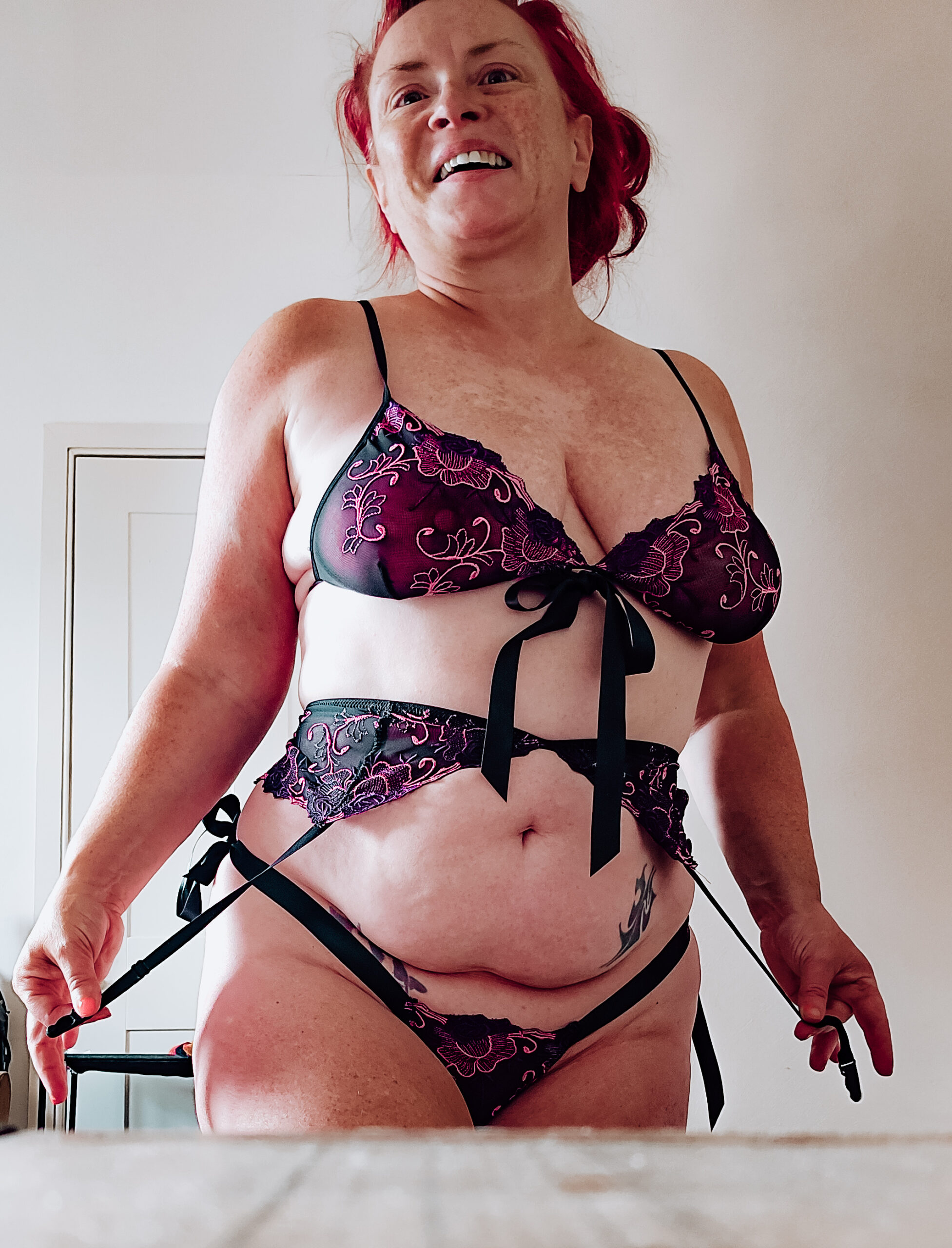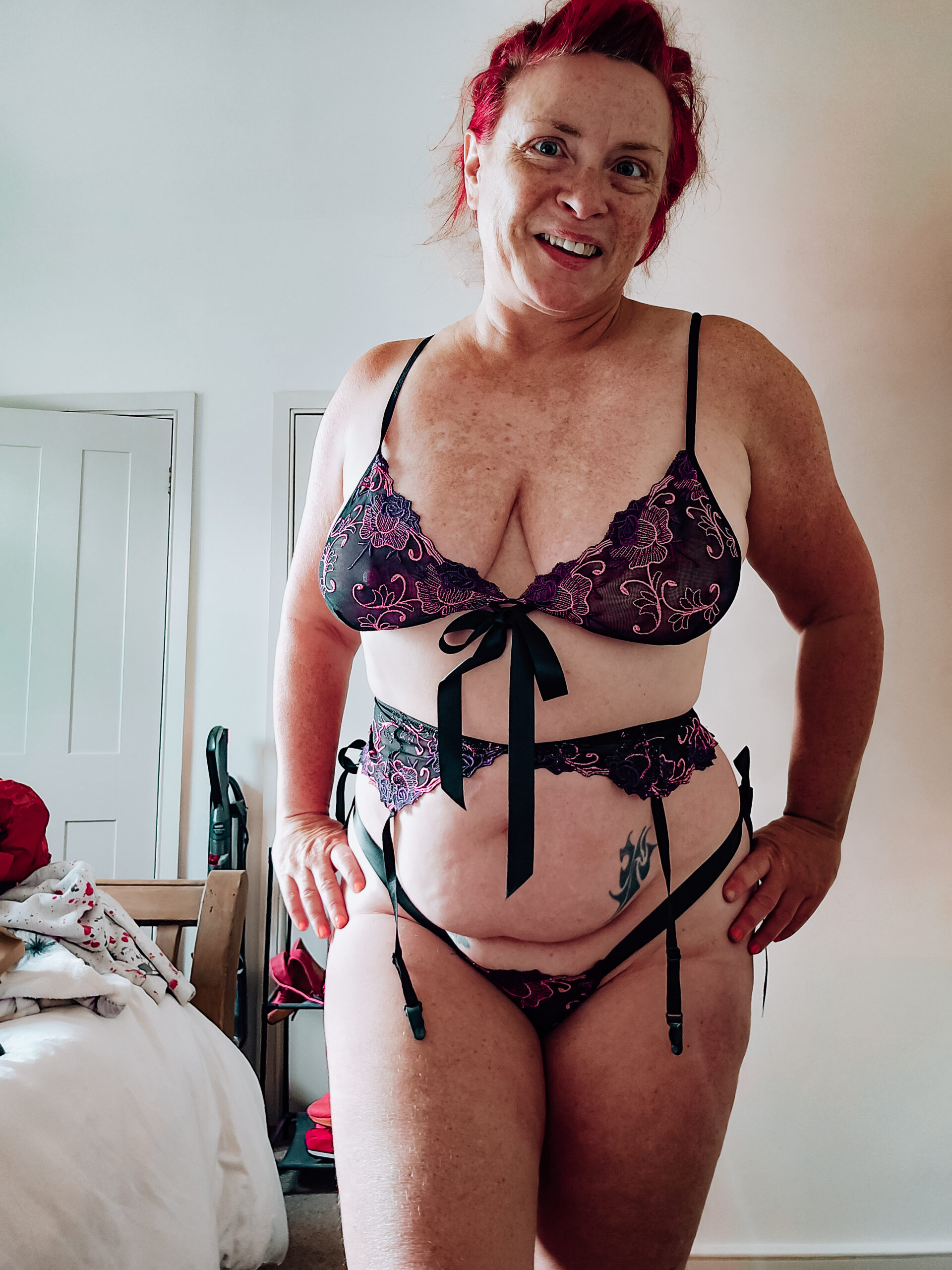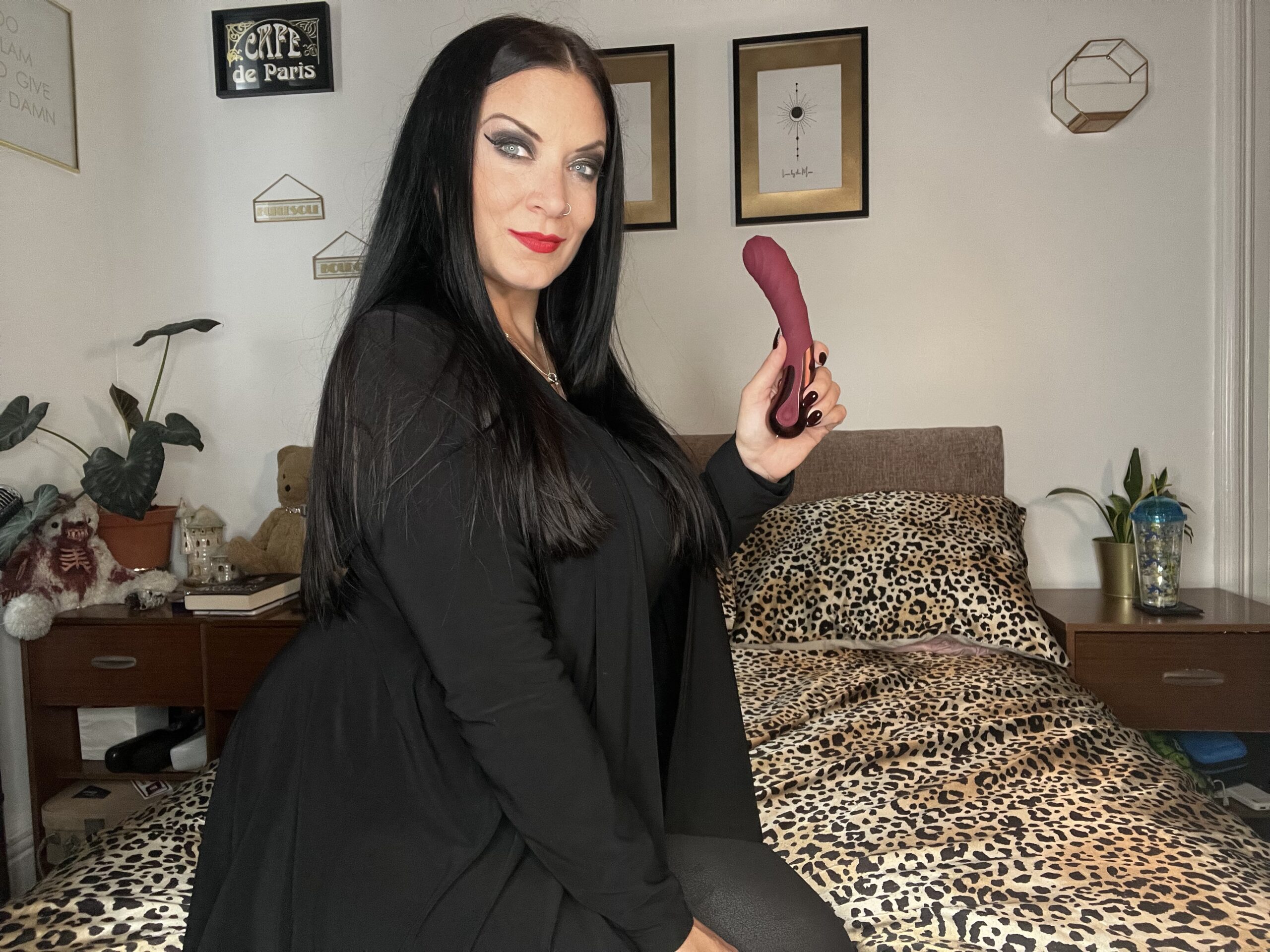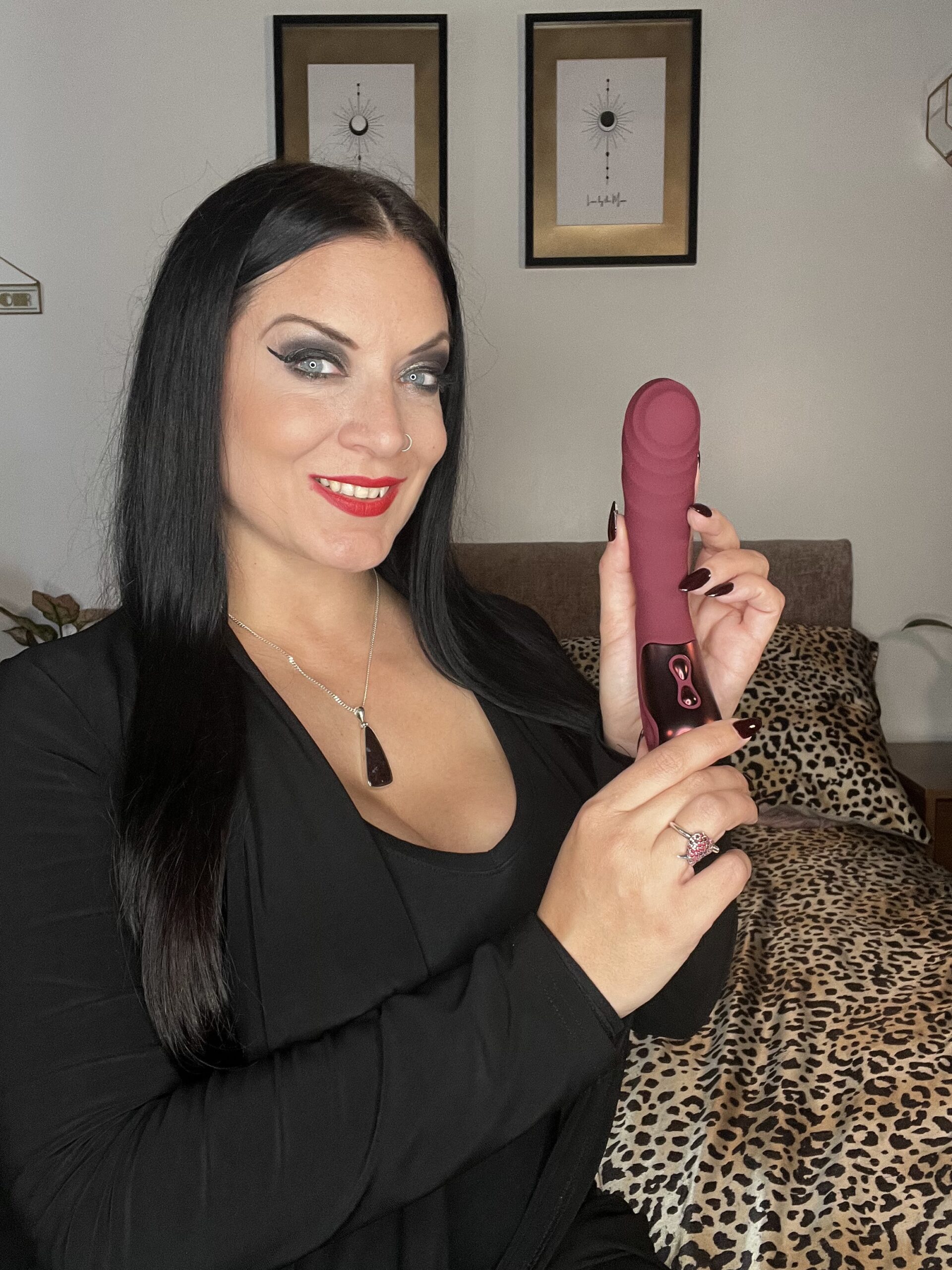Discover the World of Dermal Fillers at It’s Me and You Clinic
Understanding the Lip Flip Treatment
The Science Behind the Procedure
The Lip Flip Treatment is a non-invasive, minimally invasive cosmetic procedure that has gained popularity in recent years due to its ability to enhance lip shape and size without the need for surgery or extensive downtime.
This innovative treatment uses advanced technology to stimulate collagen production in the lips, resulting in a more defined, fuller, and plumper appearance.
The science behind the Lip Flip Treatment lies in its ability to target the underlying tissues of the lips, stimulating the natural collagen and elastin production processes that occur in our bodies.
When collagen and elastin are produced, they give structure and elasticity to the skin and mucous membranes, including those found in the mouth and lips.
The Lip Flip Treatment uses a specialized device, such as a dermal roller or a micro-current wand, to gently stimulate these tissues and encourage collagen production.
During the treatment, the device is carefully applied to the lips, and gentle vibrations or electrical impulses are emitted to stimulate blood flow and collagen synthesis.
The effects of the Lip Flip Treatment can be seen almost immediately after the procedure, with noticeable improvements in lip shape, size, and fullness lasting several months to a year or more.
However, it’s worth noting that individual results may vary, and the effectiveness of the treatment depends on factors such as the overall health of the lips, skin tone, and the level of collagen production.
Another benefit of the Lip Flip Treatment is its ability to address a range of lip-related concerns, including fine lines, wrinkles, lip discoloration, and uneven lip shape.
The treatment can be tailored to meet individual needs and concerns, making it an excellent option for those seeking a minimally invasive and non-surgical solution for lip enhancement.
In the context of the article discussing the Lip Flip Treatment near Esher, Surrey, it’s clear that this innovative procedure has gained significant attention in the region due to its effectiveness and versatility.
Local practitioners specializing in cosmetic treatments are now offering the Lip Flip Treatment as a valuable addition to their portfolio, catering to clients seeking natural-looking results without the need for surgery or extensive downtime.
In summary, the Lip Flip Treatment offers a unique opportunity for individuals to enhance their lip shape and size using advanced technology that stimulates collagen production and encourages natural beauty from within.
What is the Lip Flip Treatment?
The Lip Flip Treatment is a minimally invasive, non-surgical procedure designed to address concerns related to the lower lip, including its shape, size, and alignment with the upper lip.
During the treatment, a small amount of fat tissue is harvested from another area of the body, typically the abdomen or thighs, and then injected into the lower lip under local anesthesia.
The procedure involves using specialized techniques to manipulate the injected fat cells, allowing them to be reshaped and repositioned to achieve a more aesthetically pleasing lip shape and appearance.
The Lip Flip Treatment can effectively address a range of issues, including:
- Lower lip asymmetry or misalignment with the upper lip
- A lower lip that is too thin or small compared to the rest of the mouth
- A lower lip that is too prominent or protruding
- Lip volume loss due to aging, genetics, or weight loss
- Uneven lip lines or imperfections
The Lip Flip Treatment offers several benefits over traditional lip augmentation procedures, including:
– Natural-looking results that are unique to each individual
– No permanent scarring or marks on the skin
– Minimal downtime and quick recovery time
– Customizable treatment options tailored to address specific concerns and goals
For those living in Surrey, including Esher, there are several clinics and medical spas offering the Lip Flip Treatment.
A thorough consultation with a qualified healthcare professional or aesthetician is essential to determine if this treatment is right for you and to discuss individualized treatment options.
During the consultation, your practitioner will assess your overall facial structure, skin type, and lip concerns to create a personalized treatment plan that suits your unique needs and goals.
The Lip Flip Treatment typically takes around 30 minutes to an hour to complete, and while it is considered minimally invasive, some minor discomfort or swelling may occur after the procedure.
Full results from the Lip Flip Treatment are usually visible within a few days of the treatment, with optimal results achieved over several weeks following the procedure.
Overall, the Lip Flip Treatment offers a safe, effective, and long-lasting solution for individuals seeking to enhance the shape, size, and appearance of their lower lip.
A lip flip treatment is a minimally invasive procedure that uses local anaesthetic and radiofrequency energy to rejuvenate and reshape the lips.
A lip flip treatment is a minimally invasive procedure that utilizes local anaesthetic and radiofrequency energy to rejuvenate and reshape the lips.
This innovative treatment has gained popularity in recent years, particularly among individuals seeking to enhance the appearance of their lip shape and overall oral features.
The lip flip treatment typically involves the application of a small amount of local anaesthetic to numb the area, followed by the insertion of tiny cannulas or needles that deliver radiofrequency energy.
This energy stimulates collagen production, helping to restore lost volume and elasticity in the lip tissue. As the collagen begins to regenerate, it tightens and firms the surrounding skin, leaving the lips looking more plump, luscious, and youthful.
During the treatment process, the radiofrequency energy also helps to tighten the underlying muscle structure of the lips, known as the labial muscles. This can help to create a more defined and cupped lip shape.
The entire procedure usually takes around 30-60 minutes to complete, and most patients report minimal discomfort or side effects.
Results from the lip flip treatment are typically noticeable within a few days of the procedure, with optimal results becoming apparent after 6-12 weeks.

The effects of the lip flip treatment can be long-lasting, but it’s essential to maintain good oral hygiene habits and avoid excessive sun exposure to preserve the results.
If you’re considering a lip flip treatment in Esher, Surrey, it’s recommended that you schedule an initial consultation with a qualified practitioner or medical professional to discuss your individual needs and expectations.
During this consultation, you’ll have the opportunity to learn more about the lip flip treatment, including its benefits, risks, and what to expect during the procedure.
You’ll also be able to ask any questions or concerns you may have, allowing you to make an informed decision about whether the lip flip treatment is right for you.
In Surrey, there are numerous clinics and medical practices that offer the lip flip treatment. Be sure to research and select a reputable and experienced practitioner to ensure the best possible outcomes.
How Does it Work?
Lip flip treatment is a non-invasive, non-surgical cosmetic procedure designed to temporarily lift and rejuvenate the lower lip by increasing the volume and shape.
The treatment typically involves using hyaluronic acid fillers, such as Restylane or Juvederm, which are injected into the lips to enhance their appearance.
During the procedure, a trained practitioner will assess the individual’s lip shape and determine the best placement and amount of filler needed for optimal results.
The filler material is then carefully inserted into the lip tissue using a fine needle, and the area is gently massaged to ensure even distribution.
The effect of the lip flip treatment can be seen almost immediately after the procedure, as the filler material takes its place in the lip tissue.
Over time, the filler material will gradually break down, typically within 6-12 months, and will need to be topped up with additional injections to maintain the desired shape and volume.
The lip flip treatment can be used to address a range of concerns, including thinning lips, uneven lip lines, and droopy lower lips.

It is also possible to use the lip flip treatment in combination with other cosmetic procedures, such as lip fillers or lip enhancements, to achieve more dramatic results.
The lip flip treatment is generally considered safe and well-tolerated, but as with any medical procedure, there is a risk of temporary side effects, including bruising, swelling, and redness.
These side effects are usually mild and resolve on their own within a few days of the procedure.
In rare cases, more serious complications can occur, such as allergic reactions or infection; however, these risks can be minimized by choosing a qualified and experienced practitioner.
To ensure optimal results from the lip flip treatment, it is essential to follow post-procedure care instructions carefully and attend any scheduled follow-up appointments with your practitioner.
By understanding how the lip flip treatment works and what to expect during and after the procedure, individuals can achieve a more confident and attractive smile.
The lip flip treatment offers a non-invasive and flexible solution for those looking to enhance their lip shape and appearance without undergoing surgery or other invasive procedures.
With its natural-looking results and relatively low maintenance requirements, it is no wonder that the lip flip treatment has become increasingly popular among individuals seeking cosmetic enhancement near Esher, Surrey.
The procedure involves inserting a thin probe under the skin of the lower lip, where it heats up the tissue to stimulate collagen production and break down excess fat.
The Lip Flip Treatment is a non-invasive, minimally invasive procedure designed to give the lower lip a more prominent and plumper appearance.
This innovative treatment utilizes advanced technology to stimulate collagen production, break down excess fat, and rejuvenate the lip tissue.
At its core, the Lip Flip Treatment involves inserting a thin probe under the skin of the lower lip, where it heats up the tissue to activate the body’s natural healing processes.
This targeted heating action stimulates blood flow to the area, which in turn increases collagen synthesis and promotes the breakdown of adipose tissue, also known as excess fat.
As a result of these combined effects, the Lip Flip Treatment can lead to a noticeable improvement in lip shape, size, and overall appearance.
The treatment itself typically takes around 15-20 minutes to complete, although some providers may offer variations or add-ons to this basic procedure.
Following the treatment, patients may experience mild to moderate discomfort, swelling, or redness, which usually resolves on its own within a few hours.
Some individuals may also experience temporary bruising or discoloration, but these side effects are generally mild and fleeting.
It’s worth noting that the Lip Flip Treatment is not suitable for everyone and should only be performed by a qualified, experienced professional in a sterile environment.
Before undergoing this treatment, it’s essential to discuss your individual suitability with your practitioner, as certain medical conditions or medications may preclude you from participating.
The effects of the Lip Flip Treatment are typically noticeable within 1-3 weeks, although optimal results may take several months to fully manifest.
Maintenance treatments may be necessary to sustain the desired outcome, and your practitioner will be able to provide personalized guidance on this matter.
When searching for a provider specializing in the Lip Flip Treatment near Esher, Surrey, look for someone with extensive experience in non-invasive aesthetic procedures and a strong portfolio of before-and-after images.
A reputable practitioner should also be able to discuss the risks and benefits of the treatment, as well as any alternatives or complementary therapies that may be suitable for your individual needs.
By choosing a qualified provider and following pre- and post-treatment instructions carefully, you can ensure the best possible outcome from this innovative Lip Flip Treatment.
Benefits and Expectations
What Can You Expect from the Procedure?
The Lip Flip treatment is a popular non-surgical procedure that aims to enhance the shape and appearance of the lips by stimulating collagen production and increasing lip fullness. The benefits of this treatment are numerous, making it an attractive option for individuals looking to achieve fuller, plumper lips without the need for surgery or downtime.
One of the primary benefits of the Lip Flip treatment is its ability to increase lip fullness. By injecting a specially formulated filler into the lower lip, the treatment can create a more symmetrical and proportionate look, giving the appearance of fuller lips. This can be particularly beneficial for individuals who have naturally thin or unevenly shaped lips.
Another benefit of the Lip Flip treatment is its ability to enhance lip shape and definition. By manipulating the natural shape of the lower lip, the treatment can create a more defined and prominent appearance, which can boost confidence and self-esteem.
The Lip Flip treatment can also help to restore lost lip volume over time. As we age, our lips naturally lose volume due to collagen and elastin loss, leading to thinner, less plump lips. The filler used in the treatment helps to replace these lost volumes, giving the appearance of fuller, more vibrant lips.
Another advantage of the Lip Flip treatment is its relatively quick procedure time. Typically lasting around 30-60 minutes per session, the treatment allows patients to quickly and easily enhance their lip appearance without sacrificing too much time or taking a significant amount of leave from work or daily activities.
The results of the Lip Flip treatment are usually noticeable within a few weeks after the procedure, although optimal results may take several months to develop. Patients can expect to experience continued improvement in lip fullness and definition over time as their body continues to produce new collagen and elastin.
It’s also worth noting that the Lip Flip treatment is highly customizable, allowing patients to tailor their treatment to their individual needs and preferences. Using a range of fillers and techniques, experts can create unique results that cater specifically to each patient’s anatomy and desired outcome.
In terms of expectations, patients typically report feeling slightly uncomfortable during the procedure due to minor discomfort or swelling in the treated area. However, most patients find this mild pain manageable with a topical anesthetic cream or ice pack, and the effects usually wear off shortly after completion of the treatment.
Aftercare is also relatively straightforward. Patients are advised to avoid strenuous activities, consume soft foods, and apply cold compresses to the treated area for several days to minimize bruising and swelling.
Overall, the Lip Flip treatment offers numerous benefits and promising results for individuals looking to enhance their lip appearance without invasive surgery or long recovery times.
By understanding what to expect from the procedure and having realistic expectations, patients can make informed decisions about their treatment options and enjoy a smooth and successful experience.
RiskFree Results
The Lip Flip treatment is a popular non-surgical cosmetic procedure that aims to enhance the shape and size of the lips without the need for surgery or downtime.
A key benefit of this treatment is its ability to produce natural-looking results that can last for several months, making it an attractive option for those seeking a temporary lip enhancement solution.
During the consultation, patients will be able to discuss their expectations with the practitioner and learn more about the treatment’s capabilities and benefits.
Some of the key benefits of the Lip Flip treatment include the ability to increase lip fullness and plumpness, enhance the shape of the lips, reduce fine lines and wrinkles around the mouth, and even out skin tone.
The results of the treatment are typically noticeable immediately after the procedure, with continued improvement visible over time as the body heals and the lips continue to respond to the treatment.
Another significant advantage of the Lip Flip treatment is its low risk of complications or side effects. Most patients experience minimal discomfort during and after the procedure, and any redness or swelling can be easily managed with topical creams or ointments.
The practitioner will work closely with each patient to determine the best course of treatment and create a customized treatment plan tailored to their individual needs and expectations.
Some patients may experience mild bruising or swelling at the site of the injection, but this usually resolves on its own within a few days. In rare cases, some patients may also experience temporary numbness or sensitivity in the treated area.
The Lip Flip treatment is a relatively quick and painless procedure that can be completed in just 30 minutes to an hour, depending on the individual patient’s needs.
After the treatment, patients are usually advised to rest for a short period of time and avoid strenuous activities or heavy lip movements for 24-48 hours to minimize any discomfort or risk of complications.
With proper care and maintenance, the results of the Lip Flip treatment can last for several months, with some patients experiencing noticeable improvements for up to a year or more after the procedure.
The practitioner will provide personalized aftercare instructions to help patients achieve the best possible outcome and minimize any potential risks or complications.
Overall, the Lip Flip treatment offers a safe, effective, and minimally invasive solution for those seeking to enhance the appearance of their lips without the need for surgery or downtime.
By carefully evaluating each patient’s individual needs and expectations, the practitioner can create a customized treatment plan that addresses their specific concerns and achieves the desired outcome.
The Lip Flip treatment is an excellent option for patients who want to enhance the beauty and appearance of their lips without undergoing invasive surgery or lengthy recovery periods.
Contact Dr. Laura Geige for Expert Anti-Wrinkle Injection Advice
According to a study published in the Journal of Clinical and Aesthetic Dermatology, lip flip treatments are considered lowrisk, with minimal complications reported.
Lip flip treatments have gained popularity in recent years due to their ability to subtly enhance the appearance of the lips without undergoing surgery or other invasive procedures.
The procedure involves injecting a small amount of hyaluronic acid gel into the lip lines to create the illusion of fuller, plumper lips. The results are immediate and temporary, lasting anywhere from 6-12 months depending on individual factors such as lifestyle and metabolism.
According to a study published in the Journal of Clinical and Aesthetic Dermatology, lip flip treatments are considered low-risk, with minimal complications reported. This is likely due to the fact that the procedure involves only minor injections into the superficial tissues of the lips.
The benefits of lip flip treatments include enhanced lip appearance, improved confidence, and a relatively painless experience. The temporary nature of the results also makes them an ideal choice for those who want to test out the look without making a long-term commitment.
Some common expectations from patients before undergoing lip flip treatment include: wanting to enhance their natural lip shape, improving the appearance of fine lines and wrinkles around the mouth, and increasing lip volume. However, it’s essential to have realistic expectations, as individual results may vary.
The success of lip flip treatments depends on several factors, including the skill and experience of the practitioner, the quality of the ingredients used, and the patient’s individual anatomy. In general, patients can expect noticeable improvements in lip appearance within a few days to a week after treatment.
Common expectations from patients include feeling confident and satisfied with their results, experiencing minimal discomfort or pain during the procedure, and having easy-to-follow post-treatment care instructions.
It’s also worth noting that lip flip treatments are suitable for both men and women, and can be tailored to address specific concerns such as lip asymmetry, thinning lips, or uneven lip lines.
Overall, lip flip treatments offer a safe and effective solution for those looking to enhance their lip appearance without undergoing more invasive procedures. With minimal complications reported and a range of benefits, it’s no wonder that this treatment has become increasingly popular in recent years.
The results of the study also suggest that lip flip treatments can be a good option for patients who are looking for a low-risk, non-invasive solution to achieve their aesthetic goals. The temporary nature of the results means that patients can try out the look without making a long-term commitment, which can be beneficial for those who want to test out different options before committing to more permanent solutions.
Moreover, lip flip treatments are an excellent choice for patients who value discretion and confidentiality. As with any cosmetic procedure, the details of the treatment are kept strictly confidential, providing patients with peace of mind when it comes to discussing their results with others.
Furthermore, lip flip treatments can be combined with other non-invasive treatments such as fillers or chemical peels to enhance the overall effect and achieve more dramatic results. This versatility makes lip flip treatments an attractive option for patients looking to address multiple concerns at once.
In summary, lip flip treatments are considered a low-risk, effective solution for enhancing lip appearance without undergoing invasive procedures. With minimal complications reported and a range of benefits, it’s no wonder that this treatment has become increasingly popular in recent years.
Suitable for All Ages
Lip Flip treatment is a popular non-surgical cosmetic procedure that has gained significant attention in recent years, particularly among individuals looking to enhance their lip appearance without undergoing invasive surgery.
A key benefit of Lip Flip treatment near Esher, Surrey, is its ability to provide a temporary yet noticeable augmentation of the lower lip. This can be achieved through various methods, including the use of dermal fillers such as hyaluronic acid or calcium hydroxylapatite.
Another advantage of Lip Flip treatment is its non-invasive nature. Unlike traditional surgical procedures, this treatment does not require incisions, stitches, or downtime. This makes it an excellent option for individuals with busy schedules or those who prefer to avoid the risks associated with surgery.
The expectations from a Lip Flip treatment can vary depending on individual preferences and goals. However, here are some common outcomes that individuals may experience:
- Temporary lip augmentation: The treated area will appear fuller and more pronounced for several months, providing a noticeable enhancement to the natural lip shape.
- Enhanced facial symmetry: By targeting the lower lip specifically, Lip Flip treatment can help balance out the facial features and create a more harmonious overall appearance.
- Smoother skin texture: The use of dermal fillers in Lip Flip treatment can also help to reduce fine lines, wrinkles, and other signs of aging around the mouth.
- Easy reversibility: Since Lip Flip treatment is non-surgical, it can be easily reversed or adjusted as needed. This makes it an attractive option for individuals who may not be ready to commit to a permanent change.
Some key benefits of Lip Flip treatment near Esher, Surrey, include:
- Quick procedure: The entire treatment typically takes around 15-30 minutes to complete.
- Minimal downtime: Patients can usually return to their normal activities immediately after the procedure.
- No scarring: Since Lip Flip treatment is non-surgical, there is no risk of scarring or leaving behind any unsightly marks.
- Customizable results: A qualified practitioner can work with you to achieve your desired lip shape and appearance.
Overall, Lip Flip treatment near Esher, Surrey, offers a safe, effective, and reversible solution for individuals looking to enhance their lip appearance. With its non-invasive nature, quick procedure time, and customizable results, it’s no wonder this treatment has become increasingly popular among those seeking a temporary yet noticeable lip augmentation.
The treatment is suitable for individuals of all ages and skin types, as stated by the British Association of Cosmetic Nurses.
The lip flip treatment is a non-invasive and _permanent_ solution to achieve the desired pout without the need for lip fillers or surgery.
This treatment is suitable for individuals of all ages and skin types, as stated by the British Association of Cosmetic Nurses, making it an ideal choice for those seeking a natural-looking solution.
The benefits of the lip flip treatment are numerous and can be summarized into several key points:
*_Increased Lip Volume_*: The treatment uses _microneedling_ and platelet-rich plasma (PRP) to stimulate collagen production, resulting in increased lip volume and a more defined pout.
*_Improved Lip Shape_*: By enhancing the natural lip structure, the treatment can help to create a more symmetrical and balanced smile, leaving the lips looking fuller and more defined.
*_Reduced Fine Lines and Wrinkles_*: The microneedling aspect of the treatment helps to stimulate collagen production, which can also reduce the appearance of fine lines and wrinkles around the mouth.
*_Enhanced Skin Texture_*: The PRP used in the treatment is rich in growth factors that help to improve skin texture, leaving the lips looking smoother and more radiant.
*_No Downtime_*: One of the biggest advantages of the lip flip treatment is that it requires little to no downtime, allowing individuals to return to their daily routine immediately after the procedure.
*_Natural Results_*: The results of the lip flip treatment are natural-looking and subtle, making it an ideal choice for those seeking a solution without looking like they’ve had surgery.
*_Customizable Results_*: The treatment can be tailored to meet individual needs and goals, ensuring that the final result is unique and personalized.
*_Long-Lasting Results_*: With proper aftercare, the results of the lip flip treatment can last for several years, providing a long-lasting solution to achieve the desired pout.
The expectations from the lip flip treatment are high, as it promises to deliver natural-looking and _permanent_ results without the need for invasive procedures or prolonged recovery times.
*_A More Defined Pout_*: Individuals can expect to leave with a more defined and luscious smile, which can greatly enhance their overall confidence and self-esteem.
*_Improved Self-Assurance_*: The lip flip treatment can also have a positive impact on an individual’s mental health, providing them with the confidence to take on social situations and show off their new look.
Costs and Aftercare
Is the Treatment Affordable?
The Lip Flip treatment is a non-surgical procedure that aims to temporarily plump and augment the lips using fillers. While it can produce impressive results, it’s essential to consider the costs and aftercare involved in this treatment.
Costs of the Lip Flip Treatment:
- The cost of the Lip Flip treatment varies depending on the location, the expertise of the practitioner, and the type of fillers used. On average, a session can cost anywhere from £300 to £600.
- Some clinics may also offer package deals or discounts for multiple sessions, which can reduce the overall cost.
- It’s essential to note that while these costs might seem steep, they are comparable to other cosmetic treatments on the market, such as Botox or chemical peels.
Aftercare is crucial to ensure the longevity of the results and minimize any potential side effects. After a Lip Flip treatment, it’s recommended to:
- Rest for the remainder of the day to allow your body to absorb the fillers.
- Avoid strenuous exercise, hot showers, and direct sunlight for at least 24 hours.
- Apply a cold compress or ice pack to reduce swelling and bruising.
- Follow a gentle skincare routine using mild products.
The fillers used in the Lip Flip treatment typically take several days to fully integrate into the skin. During this time, you may experience some mild side effects such as:
- Slight swelling or redness at the injection site.
- Temporary bruising or numbness.
- Mild pain or discomfort.
After the initial healing process, it’s essential to maintain good skincare habits to extend the life of the treatment. This includes:
- Using a broad-spectrum sunscreen with at least SPF 30 daily.
- Applying a lip balm or moisturizer regularly.
- Avoiding smoking and excessive drinking, as these can reduce blood flow to the lips.
While the Lip Flip treatment is generally considered safe and effective, it’s not without risks. Potential complications include:
- Infection or abscess at the injection site.
- Allergic reactions to the fillers used.
- Uneven distribution or lumps under the skin.
To minimize the risk of these complications, it’s crucial to choose a qualified and experienced practitioner who uses high-quality products. A thorough consultation prior to the treatment will help you understand the potential risks and benefits, allowing you to make an informed decision about your lip augmentation options.
Cost Comparison with Other Treatments
The **Lip Flip** treatment is a popular non-surgical procedure that aims to enhance the appearance of the lips by injecting *_hyaluronic acid_* or *_calcium hydroxylapatite_* into the lip tissue. One of the key considerations for potential patients is the cost of the treatment, as well as the associated costs and aftercare requirements.
The cost of a single *_Lip Flip_* treatment can vary depending on several factors, including the location, the experience and qualifications of the practitioner, and the amount of *_dermal filler_* required. On average, the cost of a Lip Flip treatment in Surrey can range from £300 to £600 per session.
However, it’s worth noting that this is a one-time payment, as repeat treatments are usually not necessary unless there has been significant lip movement or loss of volume over time due to natural aging processes. Repeat treatments typically require a smaller amount of *_dermal filler_* and therefore cost less.
Some practitioners may also offer package deals or discounts for multiple sessions, which can help reduce the overall cost. It’s essential to discuss your budget and any concerns you may have with your practitioner before proceeding with treatment.
Another significant cost consideration is *_aftercare_*. This typically involves taking regular breaks from makeup, avoiding heavy exercise, and using specialized creams or ointments to promote healing and reduce swelling. In some cases, patients may also be advised to avoid certain products containing *_salicylic acid_* or *_glycolic acid_* for a period of time.
While the cost of aftercare can vary depending on the practitioner’s recommendations, it’s generally minimal in comparison to the initial treatment cost. However, some practitioners may charge extra for specialized creams or ointments, which can range from £20 to £50 per tube.
When comparing the costs of *_Lip Flip_* treatments with other lip enhancement procedures, such as *_filler injections_* using *_human placental juice_* (e.g. OCM), it’s essential to consider the individual results and any associated risks or complications.
Filler injections using human placental juice can be more expensive than Lip Flip, with prices ranging from £400 to £800 per session. However, some patients may find that OCM produces longer-lasting results due to its higher *_collagen density_* content.
In comparison, *_Lip Fillers_* made from *_polymethyl methacrylate_* (e.g. PMMA) can be more expensive than Lip Flip, with prices ranging from £600 to £1,200 per session. However, these fillers tend to provide longer-lasting results due to their higher *_degradation resistance_*.
It’s also worth noting that *_botulinum toxin_* treatments, such as *_Botox_* injections, can be used to relax the *_muscles_* surrounding the lips, creating a more _*_plump_* appearance. While not a traditional lip enhancement procedure, this treatment can be an effective alternative for patients who want to reduce the appearance of fine lines and wrinkles around their mouth.
In conclusion, the cost of *_Lip Flip_* treatments near Esher, Surrey is generally competitive with other lip enhancement procedures. By understanding the costs associated with treatment and aftercare, patients can make informed decisions about their lip care and choose the best option for their individual needs and budget.
A study published in the Journal of Cutaneous and Aesthetic Surgery found that lip flip treatments are significantly more affordable than other lip enhancement procedures, such as fillers or surgery.
The cost of a lip flip treatment can vary depending on several factors, including the location, expertise, and technology used by the practitioner. However, based on industry standards and studies, it can be concluded that lip flip treatments are significantly more affordable than other lip enhancement procedures such as fillers or surgery.
A study published in the Journal of Cutaneous and Aesthetic Surgery found that lip flip treatments are a cost-effective option for individuals seeking to achieve fuller, plumper lips. The average cost of a lip flip treatment ranges from £500 to £1,200, which is significantly lower than other lip enhancement procedures.
For example, the cost of dermal fillers can range from £800 to £2,000, depending on the type and quantity of material used. Lip surgery, on the other hand, can cost anywhere from £3,000 to £6,000 or more, depending on the complexity of the procedure and the surgeon’s fees.
It’s worth noting that while lip flip treatments may be less expensive than other options, they are still a significant investment. However, for individuals seeking a more natural-looking and long-lasting solution, the cost can be considered worthwhile in the long run.
To give you a better idea of the costs involved, here is a breakdown of what you can expect to pay for different lip enhancement procedures:
– Lip flip treatment: £500-£1,200
– Dermal fillers (e.g. hyaluronic acid or calcium hydroxylapatite): £800-£2,000
– Lip surgery (e.g. lip lift or lip augmentation): £3,000-£6,000 or more
After the treatment has been carried out, it’s essential to consider aftercare costs, which can vary depending on the practitioner and the location. Generally, these costs include follow-up appointments, medication, and any necessary revisions.
A typical package of lip flip treatments may cost between £1,500 and £3,000, depending on the number of sessions required. This amount typically includes a series of follow-up appointments to ensure that your results are optimal and to make any necessary adjustments.
Some practitioners also offer maintenance packages, which can provide ongoing support and revisions at a discounted rate. These packages may cost anywhere from £500 to £2,000 per year, depending on the frequency of sessions required.
It’s essential to discuss your aftercare costs with your practitioner before undergoing treatment, so you have a clear understanding of what to expect. This will help you make an informed decision about your lip flip treatment and ensure that you receive the best possible results.
PostProcedure Aftercare
Costs and Aftercare: It’s essential to understand the costs associated with the lip flip treatment and the necessary aftercare to ensure a smooth recovery and optimal results.
The cost of lip flip treatment can vary depending on several factors, such as the location, expertise of the practitioner, and the number of treatments required. On average, a single session can range from £200 to £500, with some clinics offering package deals or discounts for multiple sessions.
Here are some estimated costs associated with lip flip treatment:
- Lip Flip Treatment Session: £200-£500
- Pain Relief and Anesthesia: Additional £50-£100
- Follow-up Sessions: £100-£300 each
- Maintenance Treatments: £100-£200 every 3-6 months
The aftercare process is crucial for a successful lip flip treatment. Your practitioner will provide you with detailed instructions to ensure a smooth recovery.
Immediate Aftercare (first 24 hours):
- Rest and Relaxation: Avoid strenuous activities, such as exercise or heavy lifting.
- Pain Management: Follow your practitioner’s advice for pain relief and take prescribed medication as directed.
- Careful Lip Handling: Avoid touching, kissing, or licking the treated area.
- Swelling Reduction: Apply a cold compress to reduce swelling and ease discomfort.
Short-term Aftercare (next 7-10 days):
- Gentle Lip Care: Use a gentle lip scrub and avoid any harsh products.
- Mild Makeup: Use a gentle lip liner and lipstick to minimize bruising and promote healing.
- Avoid Irritating Substances: Refrain from consuming caffeine, nicotine, or spicy foods that can cause discomfort.
- Schedule Follow-up Appointments: Regular check-ups with your practitioner will ensure a smooth recovery and optimal results.
Long-term Aftercare (after 2-3 weeks):
- Maintenance Treatments: Schedule regular maintenance treatments to maintain the results and prevent regression.
- Lip Care Routine: Incorporate a lip care routine into your daily skincare regimen, including lip scrubs, lip lines, and lip balms.
- Dietary Changes: Maintain a balanced diet rich in omega-3 fatty acids, vitamin E, and antioxidants to promote overall lip health.
It’s essential to follow your practitioner’s specific aftercare instructions to ensure a successful lip flip treatment. By understanding the costs and necessary aftercare, you can make informed decisions and enjoy optimal results from your treatment.
To ensure optimal results, it’s essential to follow a strict postprocedure skincare routine, as recommended by the NHS.
A comprehensive post-treatment skincare routine is vital for maintaining optimal results following a *_Lip Flip_* treatment, such as those offered at a clinic near Esher, Surrey.
The procedure stimulates collagen production, which can lead to a more defined and plumper lip appearance. To ensure the best possible outcome, it’s essential to follow a strict skincare routine after your treatment.
Key Components of the Post-Treatment Skincare Routine
- Keep your lips hydrated: Use a lip balm or lip oil that contains natural ingredients such as beeswax, coconut oil, and shea butter to keep your lips moisturized. Avoid using harsh chemicals or artificial fragrances.
- Cleanse regularly: Gently wash your lips with a mild soap and lukewarm water. Pat dry with a clean towel, then apply a thin layer of lip balm or lip oil.
- Exfoliate gently: Use a soft toothbrush to gently exfoliate the skin around your mouth once or twice a week. This will help remove dead skin cells and promote cell turnover.
- Protect from the sun: As with any treated area, it’s essential to protect your lips from the sun. Use a broad-spectrum sunscreen with at least SPF 30 when going outdoors, especially during peak sun hours (10am-4pm).
Aftercare Tips
- Avoid biting or sucking on ice: This can cause irritation and bleeding. Instead, try sipping hot tea or drinking cold liquids through a straw.
- Use gentle lip products: Avoid using products that contain harsh chemicals, artificial fragrances, or dyes. Opt for gentle, fragrance-free products instead.
- Apply a soothing balm: If you experience any irritation, redness, or swelling, apply a soothing balm containing ingredients such as aloe vera, chamomile, or green tea to help calm the skin.
- Attend follow-up appointments: Schedule regular follow-up appointments with your practitioner to monitor the healing process and address any concerns or questions you may have.
By following this post-treatment skincare routine and attending scheduled follow-up appointments, you can ensure optimal results from your *_Lip Flip_* treatment and enjoy a more defined, plumper lip appearance for weeks to come.
Derwen Roots Ayiti Natives Highland Spring Magazine Melissa Neufeld

















